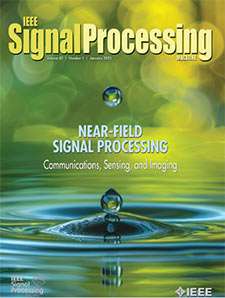Making Papers, Code, and Data Accessible
Top Reasons to Join SPS Today!
1. IEEE Signal Processing Magazine
2. Signal Processing Digital Library*
3. Inside Signal Processing Newsletter
4. SPS Resource Center
5. Career advancement & recognition
6. Discounts on conferences and publications
7. Professional networking
8. Communities for students, young professionals, and women
9. Volunteer opportunities
10. Coming soon! PDH/CEU credits
Click here to learn more.
Making Papers, Code, and Data Accessible
There have been three key revolutions in the way that research has become accessible: publishing, code, and data. The second and third revolutions are still taking place, particularly driven by the rise of machine-learning and artificial intelligence research in the last decade. When I started my research career in 1995, the World Wide Web was still in its infancy. The popular Netscape browser had just been launched. Search engines were not widely used. While many academics owned e-mail addresses, few had web pages. If they did, they were not kept current. If you wanted to look at a paper, you had to make the trek to the dusty library stacks. Or perhaps your research group maintained hard copies of journals and conference proceedings. In short, papers were available, but it was tedious to find them and obtain a copy for reading.
The first main revolution in accessibility came with the World Wide Web. Research groups began creating and maintaining research pages with publication lists. Articles subsequently appeared in electronic format, becoming available through databases like IEEE Xplore. Search engines began crawling such data sources so that research queries could be processed instantly, rather than enduring a long wait for the results of a careful library search. Publication times also decreased. Conference proceedings appeared online more quickly with each year. The submission-to-publication time for journals was reduced through online review management software and by having the authors take more responsibility for the formatting of their papers. Researchers also started sharing preprints of their research through their websites or through preprint servers. As a result, research has become easier to access, more widely available, and much more current.
The second big revolution in accessibility has come through sharing code. When I was a graduate student, it was part of the learning process to reproduce the results from another paper. I still believe this is an important part of research. But I do see the value of sharing code for research reproducibility. As algorithms and simulations become more complicated, having code available on the web enables other authors to more easily replicate the simulations in prior work and to justify their innovations. It encourages innovation by avoiding incremental research that does not improve upon what has already been performed. Of course, the authors who share code also benefit. Researchers cite the paper that describes the algorithm (or they should do so), which improves the usual publication metrics.
SPS Social Media
- IEEE SPS Facebook Page https://www.facebook.com/ieeeSPS
- IEEE SPS X Page https://x.com/IEEEsps
- IEEE SPS Instagram Page https://www.instagram.com/ieeesps/?hl=en
- IEEE SPS LinkedIn Page https://www.linkedin.com/company/ieeesps/
- IEEE SPS YouTube Channel https://www.youtube.com/ieeeSPS












